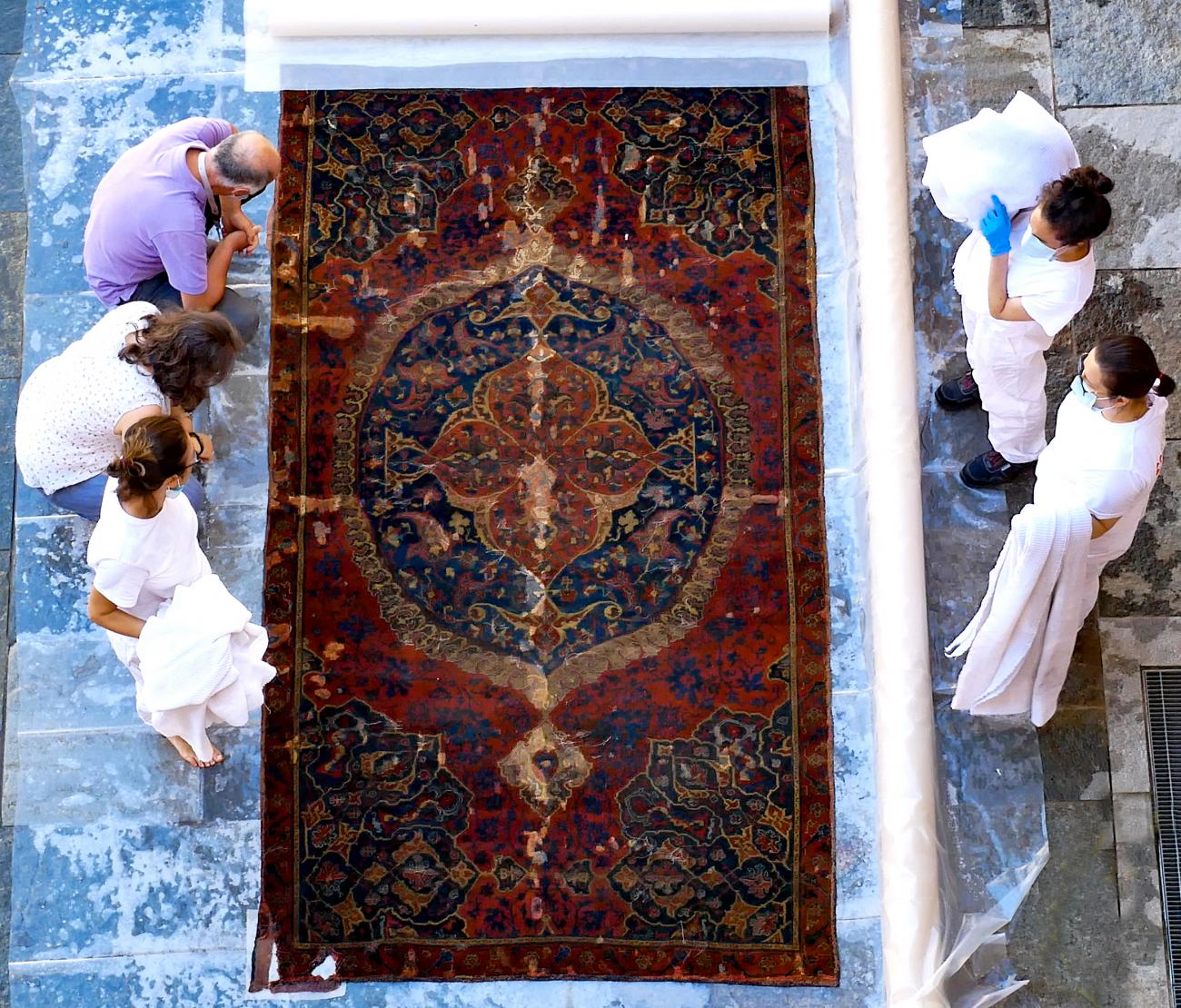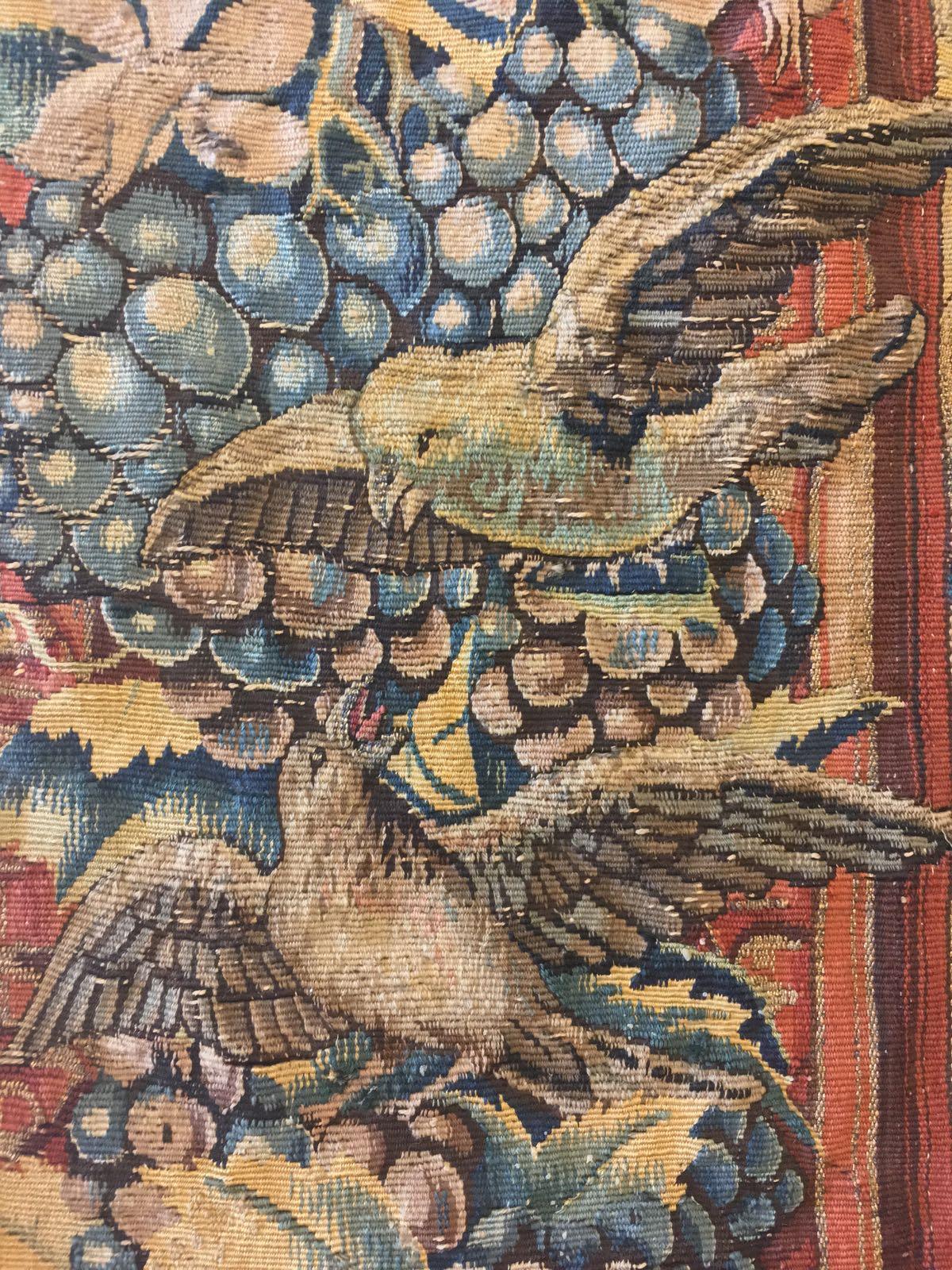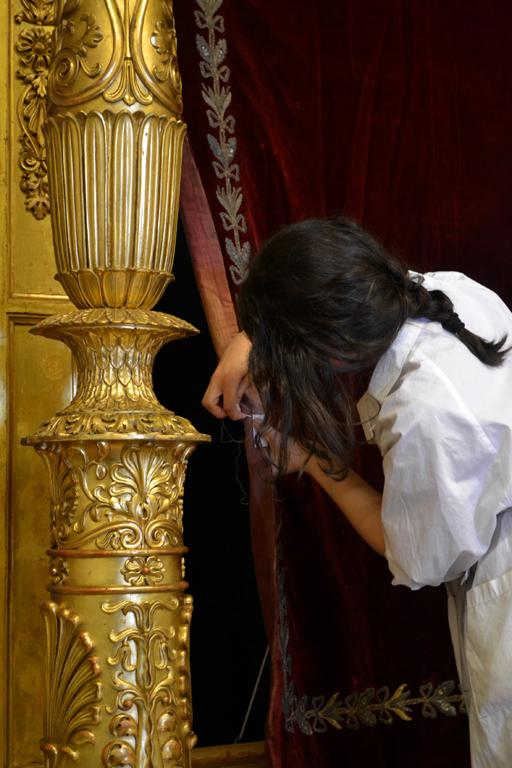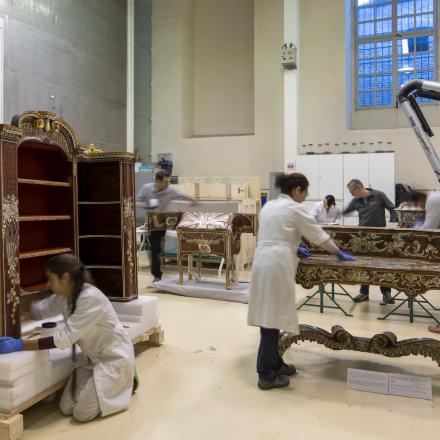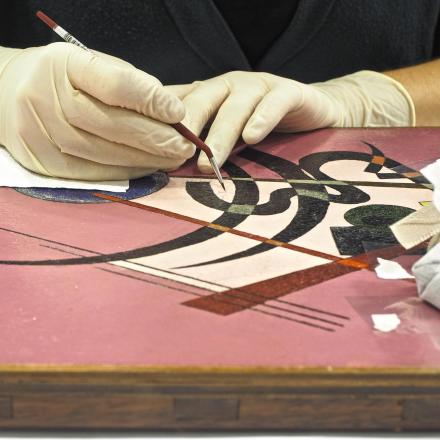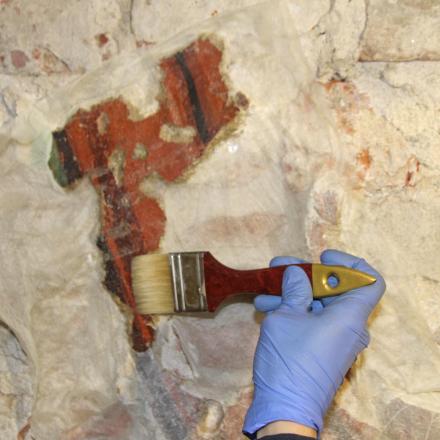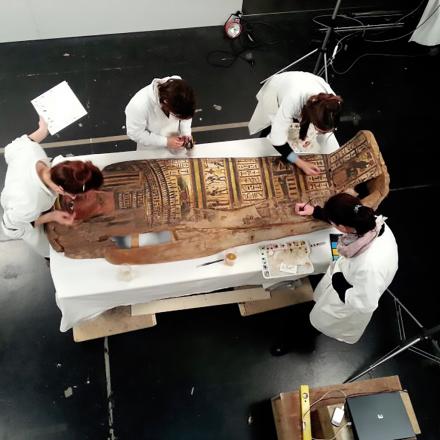The textiles department covers a wide range of artefacts, from archaeological textiles, tapestries, carpets and wall coverings, works in leather and upholstery, to items of clothing, fashion accessories, and ethno-anthropological works in feather and other organic materials.
The laboratory has ample spaces for restoring textile wall coverings, regardless of their size. Where conservation work involves washing the tapestries, a system of mobile baths has been devised, which can be set up as needed in any area of the Centro.
Study and conservation work always involves in-depth analysis of the context in which the works are relocated. Indeed, procedures for exhibiting and storing textile artefacts are always an integral part of the work developed and executed by the laboratory, in close collaboration with the museums and authorities.
The laboratory is constantly involved in preventive conservation projects and activities supporting historic residences through numerous partnerships established over the years with the various Residences of the Royal House of Savoy, the FAI (Fondo Ambiente Italiano) and ICOM Italia.
Il progetto si inserisce in un più ampio programma di valorizzazione del manufatto e di esposizione nel percorso museale della Galleria Giorgio Franchetti alla Ca’ d’Oro, sostenuto dal progetto “Una trama da svelare”, condiviso tra Gli Orti di Venezia, la Direzione regionale Musei Veneto e la Galleria Giorgio Franchetti alla Ca’ d’Oro e Nova COOP a cui anche il CCR ha aderito.
L’opera è stata restaurata nel Laboratorio Manufatti Tessili del Centro Conservazione e Restauro La Venaria Reale con un intervento particolarmente interessante anche per gli studenti del corso di laurea in Conservazione e Restauro dei Beni Culturali, corso che il Centro di Venaria organizza in convenzione con l’Università degli Studi di Torino.
Gli studenti hanno potuto osservare da vicino i restauratori dei laboratori effettuare le diverse operazioni conservative. Le attività sono iniziate nel mese di agosto 2021 e hanno previsto l’attenta analisi tecnica e materica dell’opera, la documentazione dello stato di conservazione e la mappatura delle numerose integrazioni mimetiche.
I laboratori hanno analizzato filati e tinture e realizzato test di stabilità per determinare le più idonee modalità di pulitura.
La metodologia di restauro adottata è stata di tipo conservativo poiché l’opera si presentava con grandi aree di rifacimenti mimetici che hanno in passato risarcito ampie lacune.
L’intervento si è orientato quindi verso il mantenimento delle ritessiture storiche del tappeto, mirando ad un consolidamento delle parti infragilite e ad un adeguamento estetico delle integrazioni irreversibilmente sbiadite che verranno rese omogenee alle parti originali dopo la pulitura.
Il tappeto è stato preliminarmente aspirato e, dopo gli esiti dei test di stabilità dei coloranti e una fase di consolidamento delle aree più fragili, pulito per immersione in soluzione acquosa all’interno di una grande vasca che viene realizzata appositamente per ogni lavaggio di grandi manufatti tessili, come tappeti o arazzi.
Per la riconsegna dell’opera è stato progettato, in accordo con il Museo, un sistema che garantisca il rispetto della conservazione dell’opera sia per l’esposizione in museo che farà seguito all’intervento, sia in caso di immagazzinaggio o movimentazione.
Approfondisci qui
Leggi la rassegna stampa della presentazione del progetto qui
Trovi il restauro del tappeto su Plus Magazine
The extraordinary maintenance work on the tapestries based on designs by Raphael from the collections of the Tesoro della Santa Casa Museum in Loreto revealed the need for more specific work on the tapestry known as the Madonna del Divino Amore. Micro-aspiration of the woven surface and consolidation work on damaged areas allowed the tapestry to be safely moved for its loan to the exhibition in Sao Paolo in Brazil entitled “Rafael e a definição da beleza. Da Divina Proporção a Graça”, held in late 2018.
The throne and four-poster, presented at the exhibition entitled “Dalle Regge d’Italia”, held at the Reggia di Venaria, were made for Marie Louise, Duchess of Parma. They were moved first to Florence and later to Rome, dismantled in 1946, reassembled for a brief exhibition and finally relocated in the archives of the palace, and so the restoration had to give due consideration to the numerous reassembly operations, adaptations and inevitable transformations of the wooden and textile components. The work concentrated in particular on restoring the throne’s delicate crimson silk velvet and embroidered applications in wire thread. The fabric was fragile and worn to the point of revealing the underlying warp in certain parts. The decision was made to apply a silk crêpeline lining, specifically dyed to correct defects in the original colour without invasive intervention with needlework on the textile base.
